On the 4th day of Tet (the Lunar New Year), local people in Bich Dai and Dong Ve villages (Dai Dong commune, Vinh Tuong district in northern Vinh Phuc province) hold a festival with many events, including the most anticipated performance with rice straw buffaloes.
Bich Dai and Dong Ve villages share a common communal house and every year villagers often co-organise a festival. They also worship the same General under the 6th Hung King named Dinh Thien Ich. During the festival, various performances about farming are held, among which that with the straw buffaloes is the most interesting cultural event, in memory of the General who was said to have great merits in teaching the local villagers to grow water rice.
According to the village’s title records, Dinh Thien Ich, called by villagers the Great Genie, was a talented general. At 62, he resigned his job as a mandarin and travelled around the country. When arriving at the location, he saw at once the local beautiful scenery, so he decided to settle down there. With the local residents, he built the village, taught villagers to grow water rice, breed cattle, weave fabrics, and learn to read and write. When he died, the villagers honoured him as the village’s saint.
Formerly, villagers in Dai Dong commune, who had no buffaloes or cows, and no deceased relative during the year, would make a buffalo or a cow with rice straw and brought it to the communal house yard. At present, they send three teams from different locations to participate in the festival, each team making seven straw buffaloes and cows.
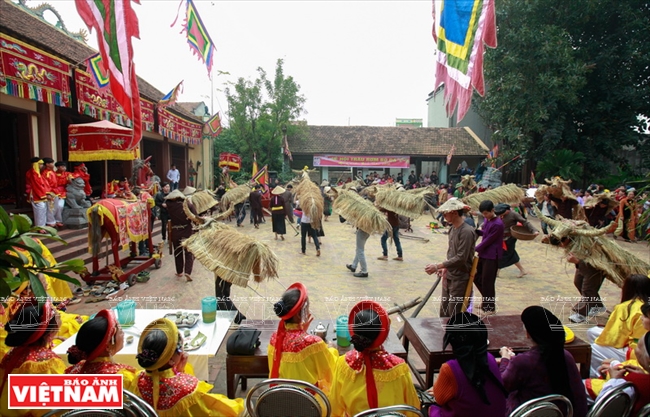
On the 4th day of Tet (the Lunar New Year), the straw buffalo performance takes place
at the yard of the communal house in Dai Dong commune, Vinh Tuong district, Vinh Phuc province.
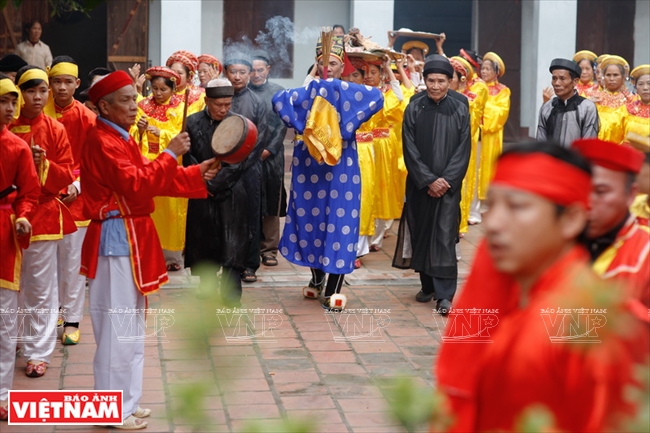
The villagers pray for an abundant crop during their traditional festival.
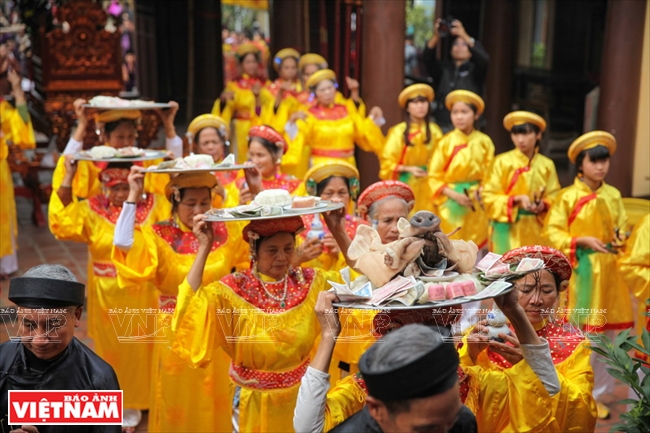
Offerings to the village's Tutelary God.
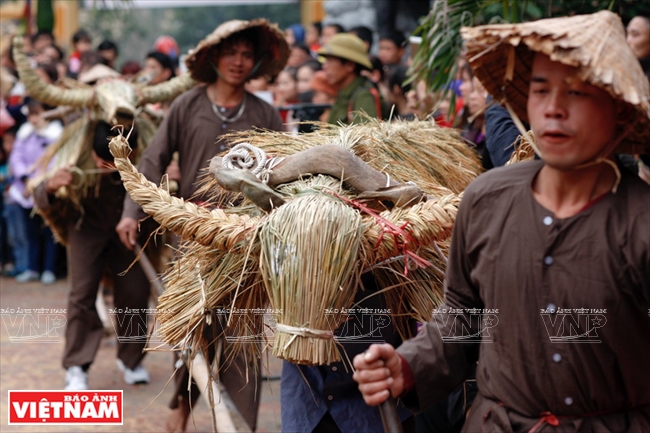
A straw buffalo is taken to the communal house’s yard of the two hamlets.

Beating the drum during the reproduction of plowing at Dai Dong village’s communal house.

Villagers take their straw buffaloes to the festival on spring days.

Long and fine rice straws stored from the last crop are used to make unique buffaloes and cows.
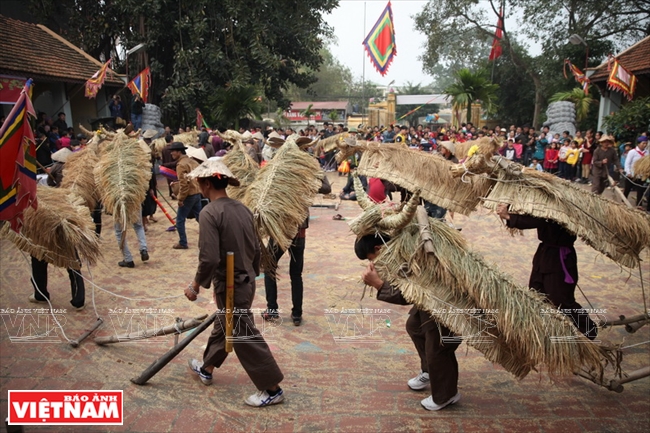
After a long roll of drum, buffaloes begin to perform moving the plow in the yard.

Men disguised as women to reproduce the work of seeding in the fields.
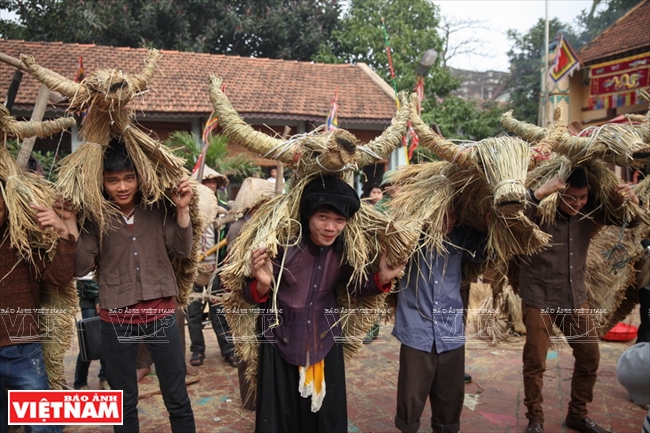
Men are happy when participating in the festival.

Villagers gather at the communal house’s yard to enjoy the spring festival.
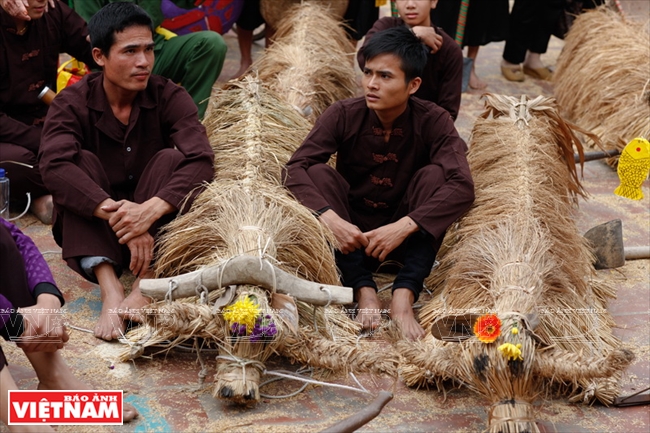
Taking a rest after a performance on the festival.

Old female farmers attend the festival. |
To make such buffaloes and cows, villagers have to store long and fine straws from the previous rice harvest. They use straw to weave the cattle’s parts, such as its head, horns and backbone, while its body is made of bamboo slices, then filled with straw before weaving its tail. To make the animal look realistic, the villagers cut a sheath of the areca tree to form its ears, paint its eyes and decorate it with flowers.
The ceremony to show the craft of making straw buffaloes and cows begins after a long roll of a drum. Young male villagers hold on to the straw buffaloes and tie them to the plow. Each buffalo wears a yoke connected to the plow, which is handled by another man. Under the flying colourful flags, the straw buffaloes were manipulated by young male villagers, performing the plowing in the communal house’s yard. Meanwhile, other young men wearing women’s dresses, hold baskets to sow rice seeds and plant young paddies which all make up a scene of the bustling harvest time.
Besides the straw buffalo performance, villagers also perform other acts of scholars, farmers, carpenters and vendors. All performances during the festival in Dai Dong commune are done to highlight the local traditional crafts, including water rice growing. They also reflect the villagers’ desire for a bumper harvest in the coming year and a prosperous life throughout the year brought in from the income of traditional craft making.
.
Story: Viet Cuong - Photos: Khanh Long & Viet Cuong